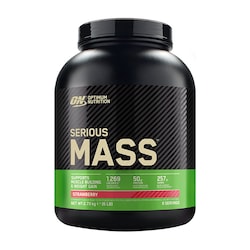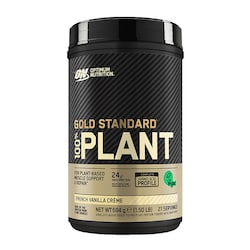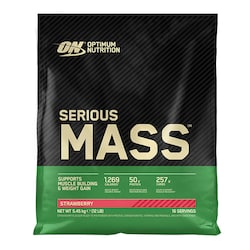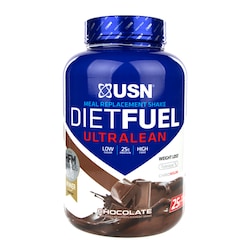20% off £30
How to pickle with apple cider vinegar in 6 steps

Making your own pickle is a great way to use up a glut of vegetables. All you need are a few key ingredients to create a zingy side to brighten up a lacklustre meal. But are pickled onions good for you? Is a gherkin a pickle? In this post, we talk about the process of pickling and how you could use apple cider vinegar to turn an uninspiring cucumber into a tangy vegetable side.
What exactly are pickles?
If you’re wondering, “what is a pickle,” the simple answer is any vegetable that’s undergone the pickling process. This involves creating an environment that’s hostile to harmful bacteria to preserve vegetables. In the case of the quick (or refrigerator) pickles we’re talking about in this post, vegetables are pickled in a vinegar, water, and salt solution. This gives them a tasty tang and also increases their shelf life. Pickled foods can be eaten directly from the jar as a snack or can be added to meals, salads, and sandwiches.
Are pickles the same as gherkins?
What’s the difference between a gherkin and a pickle? In general terms, a pickle can be any fruit or vegetable that’s preserved via prickling. A gherkin is a variety of small cucumber that happens to be perfect for pickling. So, strictly speaking, a gherkin is type of pickled cucumber. However, confusingly for us in the UK, in North America, gherkins are called ‘pickles.’1
Why use apple cider vinegar for pickling?
Most basic vinegars can be used for pickling. However, here we focus on using apple cider vinegar.
The first benefit is taste. Because apple cider vinegar is made from apples rather than barley, corn rice or wine, it gives pickles a mellower taste. Using a white distilled vinegar, for example, will create a harsher flavour.
But as well as being gentler on your palate, using apple cider vinegar also adds health benefits to pickles.
Benefits of pickling using apple cider vinegar
Here are three possible health benefits linked to apple cider vinegar:
-
Supports healthy digestion
Unfiltered apple cider vinegar contains dozens of strains of gut-friendly good bacteria known as ‘The Mother’.
-
Prevents rapid rises in blood sugar
Apple cider vinegar can help regulate blood sugar responses after eating.2 It may also improve insulin sensitivity.3
-
Helps with appetite regulation and weight loss
By promoting satiety, it can increase feelings of fullness. This can encourage you to consume fewer calories.
How to quick pickle vegetables in 6 steps
Making homemade quick pickled vegetables is inexpensive and easy. But what is pickle made of? In this post, we focus on ‘quick pickling’ using apple cider vinegar.
-
Pick your freshest veggies
If you’re thinking of using up some past their best carrots or slightly under-ripe cherries, think again. Instead choose unblemished veggies at their super-fresh best. This creates the best results as it suspends them at their peak.5 Almost any vegetable and many fruits are prime for pickling. Cucumbers and onions are classic choices, but cauliflower, beetroot, cabbage and green beans are a good place to start if you want to experiment.
-
Prepare your produce
Spear, shred, grate or slice? How you segment your vegetables is up to your preference. However, the finer they are, the faster they pickle.
-
Extract water
Sprinkle your vegetables with a light covering of salt and leave for one hour. This will prevent liquid from within your vegetables diluting and clouding your pickle liquid. Take care to rinse and thoroughly dry your vegetables before moving on.
-
Make your apple cider vinegar brine
This is the base for your pickle. To create a brine for 500g of vegetables, combine 200ml of apple cider vinegar, 75ml water and one tablespoon sugar (honey or agave also work.)
-
Add some character to your pickle
Now, get creative and customise your pickle with some carefully chosen seasonings. Sweet, spicy, sour? Simply choose the sugars, spices and herbs to satisfy your tastebuds and add them to your brine mixture. Adding garlic, chilli or black peppercorns is also an option if you like a bit of fire.
-
Add some heat
Pour your pickle liquid into a pan, bring to the boil, and allow to simmer for three minutes. Then, set aside to cool.
-
Let pickling commence
Add your vegetables to a jar and pour over the cooled vinegar mixture. Seal the jar and leave in a refrigerator.
How long should pickles pickle?
How long you leave your mixture depends on how much of a pickle flavour you want and the type of vegetable. With some quick pickles, overnight is sufficient. Or it could take six weeks to hit peak pickling.6 As a rough guide, thinly sliced vegetables take less time than larger portions, and starchier vegetables take longer than those with a higher water and sugar content.7 In addition, you can leave your pickle to mature for longer to cultivate more of a punch-packed flavour and crunchier texture.
Why are pickles not good for you?
Although pickled vegetables don’t have the same health value as fermented foods, they’re a wholesome addition to a healthy diet. In addition to the apple cider vinegar benefits, pickles (created from raw produce) also come packed with antioxidants found in fruit and vegetables.8 However, beware of the high salt (or sodium) content of some shop-bought pickles. The best way to control this is to opt for your own homemade recipes.
Suspend vegetables at their best
In summary, if you want a tangy side dish to lift a meal, pickled foods are a nutritious option. In addition, if you’ve got a bumper harvest of vegetables from your home veg patch, pickling is a great way to preserve your crop so you can enjoy the goodness all year round.
Fancy a go at making your own pickle? Have a read of our article, What can you pickle at home?, for some kitchen inspiration.
Last updated: 14 April 2021
- https://www.delish.com/uk/food-news/a33132270/what-is-a-gherkin/
- https://pubmed.ncbi.nlm.nih.gov/7796781/
- https://care.diabetesjournals.org/content/27/1/281.long
- https://pubmed.ncbi.nlm.nih.gov/24781306/
- https://www.greatbritishchefs.com/features/a-guide-to-pickled-vegetables
- https://www.sarsons.co.uk/pickling
- https://www.greatbritishchefs.com/features/a-guide-to-pickled-vegetables
- https://www.healthline.com/health/food-nutrition/are-pickles-good-for-you#health-benefits



































